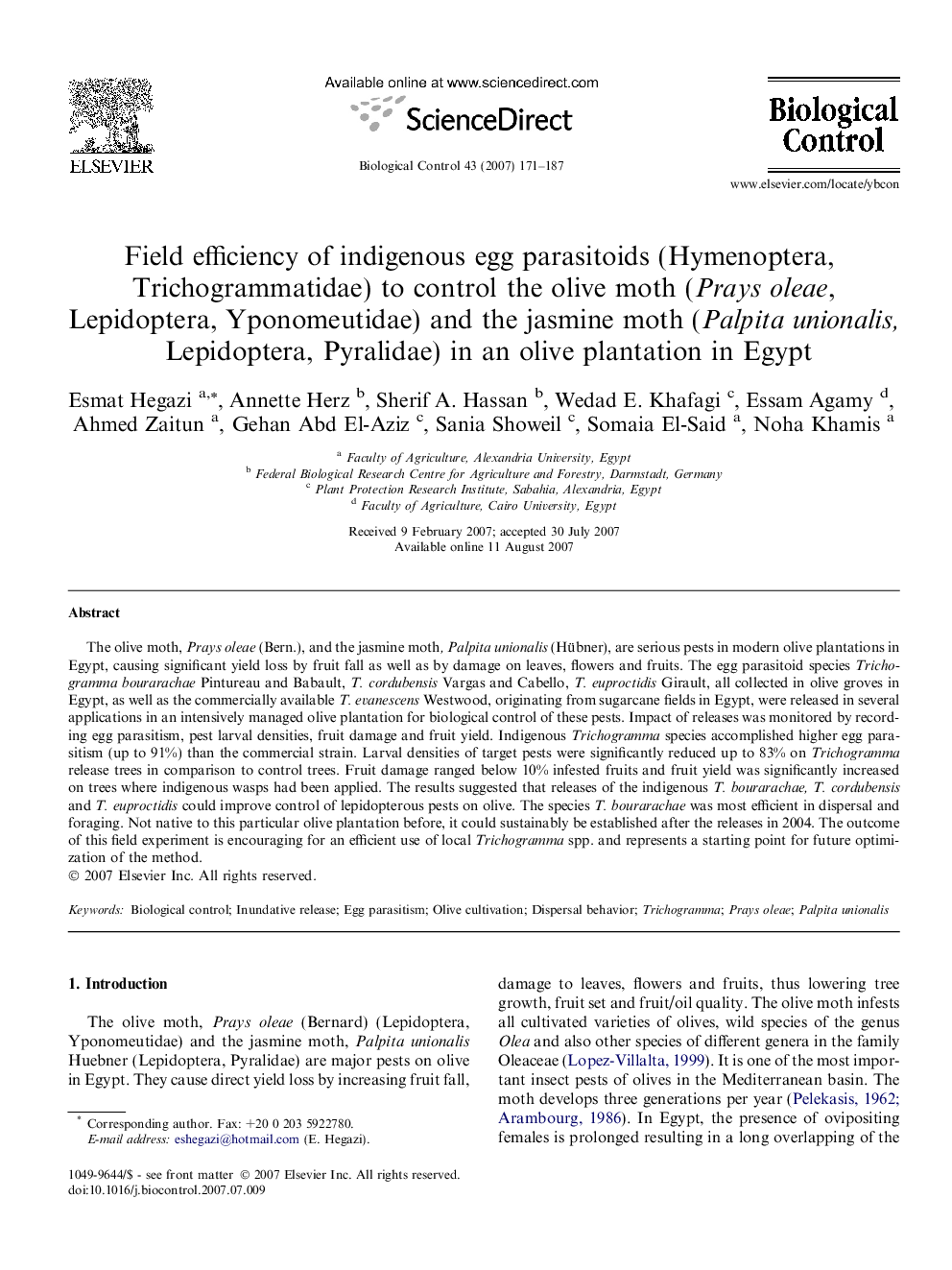| کد مقاله | کد نشریه | سال انتشار | مقاله انگلیسی | نسخه تمام متن |
|---|---|---|---|---|
| 4505135 | 1321129 | 2007 | 17 صفحه PDF | دانلود رایگان |

The olive moth, Prays oleae (Bern.), and the jasmine moth, Palpita unionalis (Hübner), are serious pests in modern olive plantations in Egypt, causing significant yield loss by fruit fall as well as by damage on leaves, flowers and fruits. The egg parasitoid species Trichogramma bourarachae Pintureau and Babault, T. cordubensis Vargas and Cabello, T. euproctidis Girault, all collected in olive groves in Egypt, as well as the commercially available T. evanescens Westwood, originating from sugarcane fields in Egypt, were released in several applications in an intensively managed olive plantation for biological control of these pests. Impact of releases was monitored by recording egg parasitism, pest larval densities, fruit damage and fruit yield. Indigenous Trichogramma species accomplished higher egg parasitism (up to 91%) than the commercial strain. Larval densities of target pests were significantly reduced up to 83% on Trichogramma release trees in comparison to control trees. Fruit damage ranged below 10% infested fruits and fruit yield was significantly increased on trees where indigenous wasps had been applied. The results suggested that releases of the indigenous T. bourarachae, T. cordubensis and T. euproctidis could improve control of lepidopterous pests on olive. The species T. bourarachae was most efficient in dispersal and foraging. Not native to this particular olive plantation before, it could sustainably be established after the releases in 2004. The outcome of this field experiment is encouraging for an efficient use of local Trichogramma spp. and represents a starting point for future optimization of the method.
Journal: Biological Control - Volume 43, Issue 2, November 2007, Pages 171–187